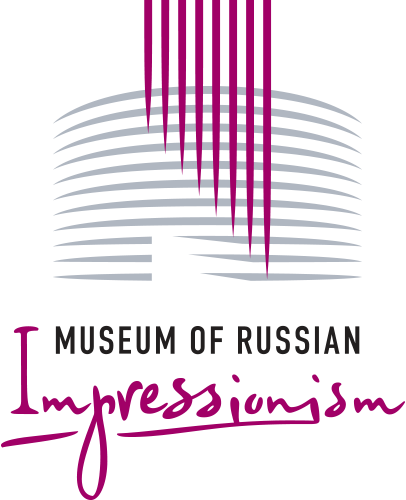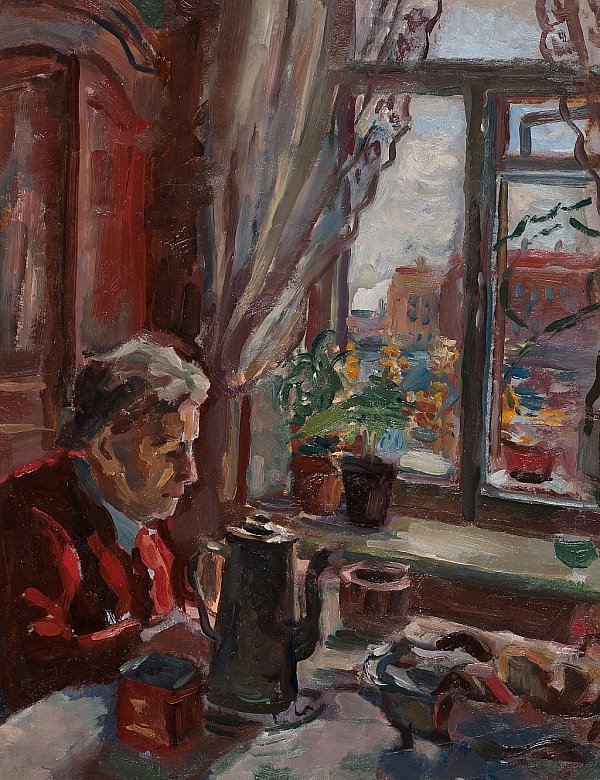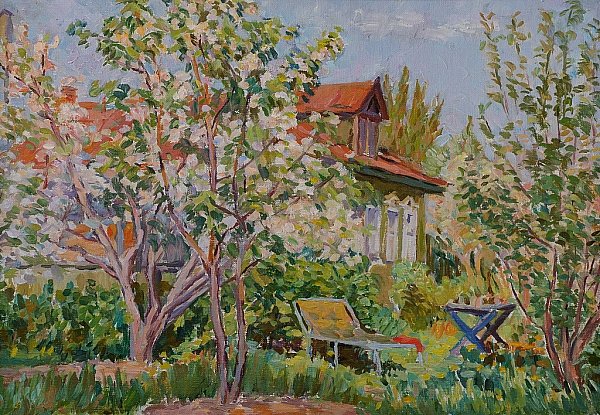Yevgeny Oaks
1899 - 1968
Yevgeny Oaks was born into an extraordinary family - his father had set up the first smallpox vaccine laboratory in the Balkans, and in gratitude Bulgaria put up a commemorative plaque in tribute to the doctor who had saved thousands of lives. Upon his return to Russia, Boris Oaks set up his own printing press and published popular medical journals and books. The artist’s mother, Cecilia Zelenska-Oaks, was an Italian opera singer. During the first Russian revolution, she shone on the stages of the best theatres in Italy: Yevgeny’s sister, Tamara, followed in her mother’s footsteps, and in her time became a famous opera star, too. There was also a legend that, on the eve of the October uprising, Lenin had hidden in their house for a few days. Yevgeny himself was called the founder of the Soviet lyrical cityscape. He studied painting at the Tenishev School and later at the Academy of Arts, and began to exhibit from 1918. In 1922 he moved from St. Petersburg to Moscow, where he started to work in publishing. At the beginning of WWII he went to the front and took part in the Battle of Moscow. Towards the end of the 1930s, however, the artist's career was seriously disrupted. "Formalism" began to be criticised and, although no punishments followed, persistent attempts to make Oaks fit into the new Soviet artistic language proved in vain. Having a sketchbook on the streets of Moscow in those days without the necessary permit or endorsement from an official creative group, even simple trips into the countryside for plein air sketching, could be unsafe. Only with the thaw of the 1960s did Oaks create a series of lyrical urban landscapes with typical Moscow titles, such as "Volkov Lane", "Sivtsev Vrazhek," and "Bus Stop at Begovaya".





